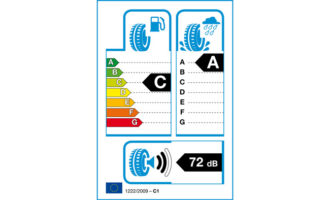
U.S. rolls back fuel economy standards for passenger cars and light trucks
The U.S. Department of Transportation’s National Highway Traffic Safety Administration (NHTSA) and the U.S. Environmental Protection Agency (EPA) yesterday released the final rule which effectively weakens the federal government’s corporate average fuel economy (CAFE) and CO2 emissions standards for model years 2021-2026 passenger cars and light trucks.
The rule will require U.S. cars, pickup trucks and SUVs to improve average fuel efficiency by 1.5% per year between model years 2021 and 2026, compared to a nearly 5% annual increase that was put in place under the previous Obama administration.
NHTSA is required by Federal law to set fuel economy standards at the maximum feasible level for both passenger cars and light trucks, for every model year. On 2 April 2018, the EPA issued the Mid-Term Evaluation Final Determination that found that the MY 2022-2025 CO2 emissions standards are not appropriate and should be revised.
The EPA claims that the final rule, which has been given the acronym SAFE for Safer Affordable Fuel-Efficient Vehicles Rule will increase U.S. competitiveness by reducing regulatory costs by an estimated USD100 billion through model year 2029. According to NHTSA/EPA projections, it will also boost new vehicle sales through model year 2029 by up to 2.7 million vehicles.
The Trump administration also claims that the new rule will reduce the average price of a new vehicle by about USD1,000, and will make it safer. “About 3,300 fewer crash fatalities, 397,000 fewer injuries, and more than 1.8 million fewer vehicles damaged in crashes are projected over the lifetimes of vehicles built according to these new standards,” the EPA said.
Under the SAFE Rule, the projected overall industry average required fuel economy in MYs 2021-2026 is 40.4 miles per gallon (mpg), compared to 46.7 mpg projected requirement in MY 2025 under the 2012 standards. The new rule reduces the number of credits that are not associated with improved fuel economy. This rule is the largest deregulatory initiative of this administration.
The agencies project that under these final standards, required technology costs would be reduced by USD86 to USD126 billion over the lifetimes of vehicles through MY 2029. At the same time, the SAFE Vehicles Rule establishes one set of national fuel economy and CO2 emissions standards for passenger cars and light trucks, preempting state and local tailpipe greenhouse gas (GHG) emissions standards as well as zero emission vehicle (ZEV) mandates.
The Trump administration’s move follows its attempt to revoke the state of California’s ability to set its own, more stringent tailpipe standards. California, joined by nearly two dozen states, is suing the administration for the right to set its own fuel efficiency standards.
The final rule can be found here: https://www.epa.gov/regulations-emissions-vehicles-and-engines/safer-affordable-fuel-efficient-safe-vehicles-final-rule.









